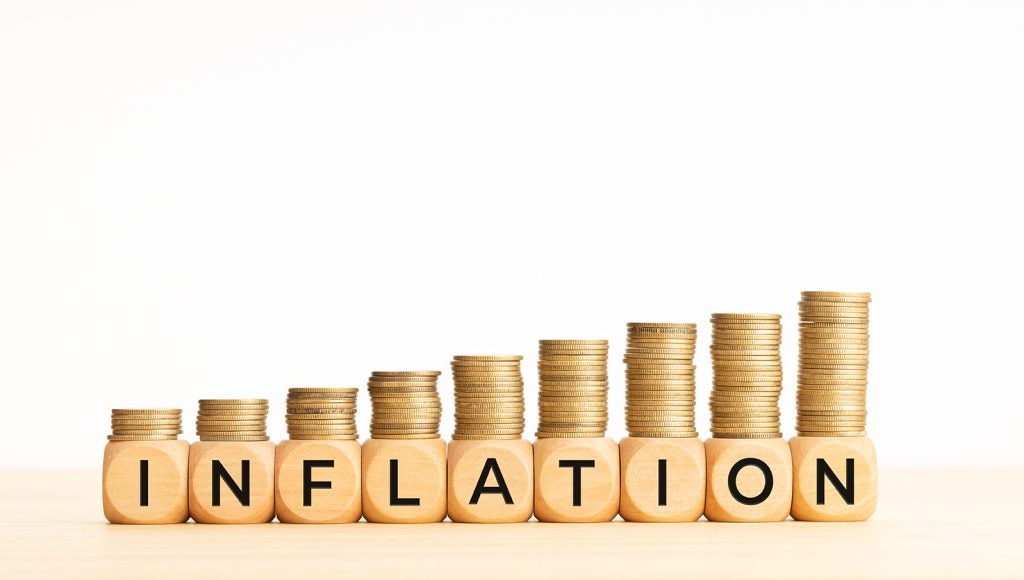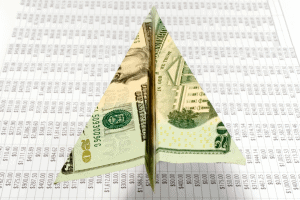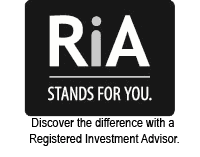Download the PDF copy here
Executive Summary
- 2020 and 2021 were defined by extraordinary influences over the economy, namely, covid, efforts to contain it, and stupendous levels of fiscal and monetary action applied to survive the containment policies. This led to large consumer demand for goods while production of goods was significantly curtailed. There was some belief that the resultant supply constraints would be resolved in due course of the full reopening of the economy.
- As 2022 rolled around we had hope for relief from Covid and opportunities to resolve supply/demand imbalances for goods. Instead, we have Russia instigating a war with Ukraine and a new variant of the Omicron Covid virus. Not to mention the evil and human tragedy on display in the war in Ukraine, the direct impact of the war is further straining supply in energy, metals, fertilizers, and grains. Furthermore, China’s zero-tolerance policy towards containing Covid, which involves the lockdown of several large cities, is contributing to continued supply constraint.
- A strong functioning economy cannot coexist with elevated inflation beyond the short term.
- What would help in the effort to lower inflation?
- Lower fiscal support.
- Tightening of monetary policy with increased interest rates via raising short-term rates and quantitative tightening (explained below).
- Seeking to live normal lives regardless of the status of Covid.
- Return to a normal balance in consumer spending between goods and services.
- An increase in employment by any means to achieve a higher participation rate.
- Self-cure induced by continued high inflation there by reducing demand.
- Fiscal support is down significantly since the massive payment programs in 2020 and 2021 but is up 21% from the pre-Covid level. 65% of this increase comes from social benefit programs (Social Security, Medicare, and Medicaid) in existence before Covid. 35% of the increase involve remnants of Covid rescue efforts.
- The Federal Reserve is planning more aggressive steps to slow the economy including raising the Federal Funds rate (increasing short-term interest rates) and exiting the market for acquiring mortgage-backed bonds and Treasuries. This action is called quantitative tightening and is accomplished by not replacing their bond holdings as they mature. This lessens the demand for bonds thereby driving up interest rates on longer-term bonds.
- Bond market participants believe the Federal Reserve is committed to raising rates as the 10 Year Treasury rate has increased about 1.5% year to date (1.7% since mid-December) while the Federal Reserve has raised the Federal Funds rate just 0.75% so far.
- China’s zero-tolerance Covid policy is exacerbating goods supply issues.
- A return to a normal balance in consumer spending between goods and services and higher employment participation are aided by a return to pre-Covid activity.
- The preferable route to lowering inflation involves increasing supply in order to meet growing demand.
- Tighter fiscal and monetary policy (although necessary) run the risk of eventually inducing a recession as would unchecked and continued high inflation resolving itself via lower demand.
Macro-Economic Perspective
- Following Real GDP growth of 5.5% for 2021 and 6.9% in the fourth quarter of 2021, the advanced estimate of Real GDP in the first quarter was a decline of 1.4%. January and half of February were marked by a remarkably high Omicron caseload, placing a drag on the economy in the first quarter. So far, we don’t see a repeat of that situation in the USA for the second quarter. Some evidence of economic strength in the first quarter was indicated by strong inventory build-up and high imports. (Although, net imports are deducted from the GDP calculation).
- Most recent projections for real GDP growth in the USA have been lowered by one percent or more to center around 2.8% for 2022 and 2.2% for 2023.
- Disposable income (adjusted for inflation) rose 4.8% in the first quarter, but real disposable income declined 2%. Source: U.S. Bureau of Economic Analysis.
- The savings rate in Q1 was 6.6% compared to Q4 2021 rate of 7.5%. This aggregate reading of saving in the USA is at a healthy level and is an indication that the consumer is able to manage the inflationary pressure so far.
- There has been a massive increase in M2 money supply (cash, checking and savings deposits, money market, mutual funds, and CDs) of 42% from February 17, 2020, to the end of 2021. Money supply grew 6% (3% to 6% is typical) in the first quarter this year as anticipated after the massive growth of supply in the last two years. Source: Federal Reserve Bank of St. Louis. It is assumed that the Federal Reserve will shrink the money supply this year as they pursue quantitative tightening in their collection of efforts to raise short-term and longer-term interest rates and lower inflation.
- The velocity of money (the frequency at which one unit of currency is used to purchase goods and services within a given period) continues at an exceptionally low level. As a result, this has not been additive to our inflation problem.
- Household net worth peaked at $111.04T at year-end 2019. Since then, it has risen 28% to $142.18T at the end of 2021. This continues to be supportive of economic growth. Source: Federal Reserve(March 2022 reading comes out in June).
- Total real personal consumption (adjusted for inflation) was up 4.7% year over year at first quarter-end. The annualized rate has slowed to about 2.6% measuring from each successive quarter-end through March month-end. Source: U.S. Bureau of Economic Analysis. It is hard to say that this is evidence of a slowdown of consumption given the huge spike in Covid (Omicron) in the first half of the first quarter this year.
- In addition to the overall health of personal savings and net worth in the USA, there remains pent-up demand for services consumption. Before Covid, the real (inflation-adjusted) balance of goods/services spending was 37% to 63%. At the peak of behavior shift due to public restrictions, the goods/services spending shifted to 41%/ 59%. The trend is beginning to reverse with a reading of 40% / 60% at the end of the first quarter. This adjustment in spending behavior could help lower goods inflation but may shift it towards the services side of spending if labor supply remains constrained.
- There were 1.65 million jobs gained in Q1.
- There are 11.5 million job openings, up 0.6 million since 2021-year-end.
- Officially, there are 6million unemployed, down 0.5 million since year-end–almost two job openings per unemployed person. Yet those receiving continued claims are only 1.3 million, lowest since 1970. Filings for new claims for unemployment benefits is lowest since 1968.
- The labor participation rate has increased from 61.5% in March 2021 and 61.9% at last year-end to 62.4% in March this year. Prior to Covid, the participation rate was 63.4%.
- Labor supply remains an issue. Gains in productivity and participation are necessary. There are 20.8 million part-time workers (up 1.2 million in the last year) in the USA for non-economic reasons.
Key Economic Data Points
Inflation: All measures of inflation have been quickening at a worrisome pace since March 2021. The Federal Reserve’s data through March shows overall inflation continuing to rise, where core inflation (which excludes more volatile food and energy readings) had a marginal decline in March from February, 5.3% to 5.2%. The Bureau of Labor Statistics tracks consumer price inflation (CPI). Their data shows CPI going from 8.5% in March to 8.2% in April. Their Core CPI reading declined from 6.5% in March to 6.2% in April. Estimates of the short-term to intermediate-term future of inflation are all over the map, but all point to lower inflation in the future. University of Michigan survey of consumers projects 3% inflation over the next five years. A measure of expected inflation, the 10-year Treasury Inflation-Protected Securities/Treasury Breakeven Rate peaked at 3.02% on 4/21/22 and currently is at 2.59%. The Federal Reserve projected PCE Core inflation at the end of 2022 at 4.1%, 2.6% for 2023, and 2.3% for 2024.
The unanswerable question is, will inflation come back down to a desirable level through a combination of creative capitalistic supply solutions, monetary policy tightening, and people desiring to go back to work, or will high inflation be subdued the hard way – via a recession?
To date, projections and some data indicate a slowing of economic growth absent a recession, or otherwise known as a soft landing.
Growth Projections look promising. Just as a reminder, real GDP exceeded the pre-pandemic peak real GDP by 2nd quarter of 2021. Projections for real GDP growth in the USA center around 2.8% for 2022 and 2.3% for 2023. Global growth: 3.6% and 3.6%, respectively. Euro-area: 2.8% and 2.3%, respectively. U.K.: 3.7% and 1.2%, respectively. China: 4.4% and 5.1%. South Korea: 2.5% and 2.3%. India: 8.2% and 6.9%. Japan: 2.4% and 2.3%. Canada: 3.9% and 2.8%. Mexico: 2.8 and 2.1%. The only major countries with a decline in GDP projected were Russia and Ukraine. With more press time devoted to the possibility of recession, we are not seeing it in prognostications of economic growth.
Employment: There is evidence that corporations are raising capital investment for automation to help deal with lower employment participation rates since Covid. GDP growth can be achieved via greater employment and/or greater productivity from a given employment level. Job openings were 11.5 million at first quarter-end. This represents 7.0% of the present workforce in the USA.
Consumer spending (70% of GDP): Real personal consumption expenditures (annualized) rose 4.7% over year-ago level. The Institute of Supply Management (ISM) reading for service continues at elevated levels, October 66.7, November 69.1, December 62.3, January 59.9, February 56.5, and March 58.3. There was a slight rebound in March after the trend down in the previous two months (Covid spike), but these remain particularly good numbers. A reading of 50 is the dividing line between decline and growth.
Manufacturing (11% of GDP): The ISM reading for manufacturing also remains high November through March(’22)at 61.1, 58.8, 57.6,58.6, and 57.1, respectively. The trend is down but is still elevated. The Federal Reserve reported a 2.0% increase in industrial production in the 1stquarter. This is the first quarter in seven without a gain of at least 4%.
Construction (4.1% of GDP): Construction rose 3.7% in the first quarter and is up 11.7% from the year-ago level. Residential construction was up 18.2% while non-residential construction was up 5.6% in Q1 from the year-ago level. Data from the Department of Commerce. Higher inflation and interest rates have not yet impacted construction growth.
Home sales: National Association of Realtors (NAR) reported that existing home sales were 6.18 million homes in 2021. By March this year, the annualized pace was 5.77 million. The supply of homes available for sale is still an exceptionally low 2 months. Six months’ supply is considered a balanced marketplace for buyers and sellers. New household formation was1.6million in 2021. (Data from Fed Reserve of St. Louis). New residential construction unit permits (1.873 million), new housing unit starts continues to rise this year to a 1.793million pace for the year in March. (Data from U.S. Census Bureau). This increase in supply via construction is most welcome given a lack of inventory. But, in an interesting twist, single-family home starts were down 4.4% compared to March of 2021, but multi-family starts were up 28.1% over the previous March. This certainly is not yet a trend, but it would be helpful with affordability of housing. Especially since NAR reports that the median price for a single-family home sold rose 15% year over year in March. Affordability of single-family homes will remain a problem, especially for first-time buyers as long as inventory remains low, and the Federal Reserve continues to raise rates in 2022 as projected.
Securities Market Perspective
In the first quarter this year, a 100% stock portfolio with 20% invested in international was down approximately 5.02% with dividends reinvested. Intermediate-term bonds (Barclay’s Aggregate Bond Index) were down 6.20%, and short-term bonds were down 2.49% (Barclays U.S. Gov’t Credit 1to 3 Year Bond Index). Since the end of March both equity and bond prices have continued further down.
To date, the Federal Reserve is projecting a need to raise the Federal Funds rate from a range of 0 to 0.25% in January to a range of 1.75% to 2.00% by the end of this year and additional increases totaling one percent in 2023. By most historical standards, this is an aggressive path. For some, not aggressive enough given the Fed’s own projection for core inflation of 4.1% by year-end, thus maintaining a negative real (interest rate minus inflation) Federal Funds rate. The pace of interest rate increases will be data-dependent with a focus on inflation measures. Alas, the target for the Federal Funds rate at the end of 2023 of 2.8% would be in line with their projection for inflation of 2.3%.
Regardless of one’s opinion of the assertiveness of the Federal Reserve towards dealing with inflation, Mr. Market’s initial reaction to the prospect of rising interest rates has been fitful. Intermediate-term bonds, as measured by the 10-year Treasury, have already lost enough value to account for all of the rise of interest rates for the year without credit for interest yet to be paid. In the first quarter, bonds had their worst performance since 1981. DBFM had moved a heavy portion of bonds to short-term bonds in anticipation of rising interest rates a few years ago.
Stocks have also reacted negatively to the prospect of continued high inflation and higher interest rates. Especially so for growth stocks. By March 31st, the weighted average return for domestic growth stocks was -9.58%, and the weighted average return for domestic value stocks was -0.70%. Value stocks were leading all stocks by 4.44% in the first quarter.
At first quarter-end, as measured by price to book value, growth stocks were 146% (down from 180% at 2021 year-end)above their long-term average of 4.83 at 11.9. Value stocks were 18% (down from 23%at 2021 year-end)above their long-term average of 2.18 at 2.58. On a relative basis, there could be more pain ahead for growth stocks as compared to value stocks. Low-interest rates were providing cover for higher valuations, particularly for growth stocks. With assurances of interest rate increases, you can expect greater headwinds for growth stocks.
80% of S&P 500 companies reporting Q1 results had profit results above analysts’ estimates.
Wrap-up (Recession?)
- The bad
- Ukraine war and its impact on energy, metals, and grain costs.
- Zero tolerance Covid policy in China impacting supply.
- Risk of recession is greatest in Europe due to their dependence on Russian energy.
- USA, UK, and Euroland: 16 episodes of increased interest rates since the 1970s, 13 ended in recessions.
- Wild cards
- The path of Covid and treatments.
- Dockworkers contract negotiations this year affecting 40% of seaborne imports.
- We are not seeing signs of stress in the economy that would be present leading up to a recession.
- Household delinquencies are below pre-pandemic lows.
- Bank charge-offs normally average about 2.5% or more are still below 1.5% for three straight quarters.
- High yield corporate bond default rates are at historically low levels.
- High yield bond spreads to Treasuries have risen in the last month but remain below the long-term average.
- Is there a path to a soft landing (lower inflation without recession)?
- The Federal Reserve is raising interest rates when the economy is not overheating.
- If higher interest rates and weaker real incomes serve to trim excess demand, they may ease pressure on supply chains that have fueled inflation.
- Although travel and accommodations are rising, sales of durable goods declined in February and March.
- Amazon had their slowest quarterly growth in two decades.
- Jeffries Research survey of 3500 consumers showed caution is rising.
- WSJ survey of economists –63% say the Federal Reserve can reign in inflation without inducing a recession.
- Trucking freight rates market is clearly slowing down as shipping comes in line with capacity.
- Container ships waiting off the coast of California has shrunk by more than half.
- About ¾ of the top 100 cities by gross domestic product have either loosened restrictions to pre-Omicron levels or removed them entirely.
- Manufacturing, retail, and wholesale inventories which plummeted 5% between the start of the pandemic and last September are up 3% since.
In the meantime, we remain long-term bullish, seeking necessary or opportunistic tactical adjustments to portfolios, and remaining diversified for long-term success.
Please feel free to contact us with any questions, or if you would like to schedule a virtual, face-to-face, or phone meeting.
Thank you,
Dave Dickmeyer, M.B.A.
Wealth Advisor
Principal Owner
Ian D. Boyce, CFP®
Certified Financial Planner™
Principal Owner








